Summer is here at last and I’m revelling in this sunshine. Some of my plants haven’t been so happy with the 30C temperatures, but we had a thunderstorm last night that brought bucketloads of refreshing rain so the hydrangeas and rudbeckias have perked up and everything looks looks a bit less weary this morning. Some gardens go through something of a hiatus at this time of year, so the trick is to have a few reliable perennials that you know are going to carry you through until the end of summer. Here are my top 10 August plants.
Helenium ‘Sahin’s Early Flowerer. This brings a hit of pure, fiery colour to the border in August. There are various heleniums to choose from but this one, for me, is the best. Its large, daisy-like flowers come in various shades of golden yellow and deep crimson-orange and the petals are often streaked. The central cone starts off as a velvety brown button and morphs into a round sphere of yellow-edged filaments before fading again to leave a dark seed head. It likes a reasonably moisture-retentive soil and full sun. Make sure it doesn’t get jostled too much by other plants as it doesn’t take kindly to being over-crowded.
Hydrangea ‘Annabelle’. This is perhaps an overused hydrangea, but it it is so effective for the performance it puts on for many weeks over the summer. I hesitate to include it here because the reason its huge powderpuff flowers go on blooming for so long is that they are sterile, so this isn’t a good cultivar to choose if you want to attract bees and butterflies. But as one gardener I met this week said, if the majority of a border is planted with bee and insect-friendly flowers, then perhaps having one plant chosen solely for flower power is allowed. Most of the other plants in this border have single blooms to provide the nectar and pollen that the insects need. Anyway, there’s no doubt that ‘Annabelle’ puts on a good show in the middle of my border. She needs very little time spent on her, other than a light prune in late winter or early spring and perhaps the odd bucket of water if the weather is very dry. Flowering through July and August, the seed heads are also valuable through autumn and winter.
Eupatorium maculatum Atropurpureum. This plant more than makes up for the hydrangea’s lack of pollen, as it is absolutely covered in bees and butterflies during the summer. This year there are noticeably less butterflies where I am because of our cold, wet spring, but a few more have appeared in this warm spell we’re currently having. This is an American native known as Joe Pye’s weed with tall, sturdy reddish stems and flat domes of dusky pink-purple flowers. You need plenty of space for this one as it grows up to about 2m. I have it at the back of the main border behind the white aster, Symphiotrichum umbellatum and among tall Calamagrostis acutiflora ‘Karl Foerster’.
Dahlia australis. This is a species dahlia that is reliably perennial in my garden, producing lovely pinky-purple daisy flowers that bob about on tall wiry stems. It has obviously enjoyed our wet spring because the plants are bigger than ever this year and flowering prodigiously, shown above with Phlox paniculata ‘Monica Lyndon Bell’ and Helenium ‘Sahin’s Early Flowerer’. The species dahlias are very, very easy to grow from seed, and will produce a flowering plant the first year, and then come back from the tubers they form every year after that. Win win: a cheap and easy August plant to get into your border - and pollinator-friendly too.
Salvia guaranitica ‘Black and Blue’. This is a fantastic late-summer salvia with tall plumes of true blue flowers, growing 1.5-2m tall. The Beth Chatto website says it’s not hardy but it has survived in my garden for three years and we’ve been down to minus 7C. As you can see from the photo above, I’ve mixed it with another tall salvia, S. involucrata, with huge, lipstick pink blooms, and the two of them will go on flowering well into autumn. Salvias like well-drained soil in a sunny position and if you’re worried about losing them over winter, they are also very easy to take cuttings from (see below).
Aster frikartii ‘Monch’. I used to think this early-flowering aster was too garish but I’ve changed my mind. In small quantities it is invaluable for adding a dash of colour to a fading border, its bright lavender-hued flowers mixing well with Stipa tenuissima, rudbeckias and sedums. It prefers quite a rich soil in an open sunny position and will reliably flower for at least a month. It doesn’t suffer from mildew like many asters either.
Oreganum laevigatum ‘Herrenhausen’. As I crouched down to take this photo just now, all I could hear was a chorus of bees buzzing around me. Bees adore this plant, a superior form of our native oregano, and it is super-easy to grow. It’s perfect tumbling over the edge of a border and it winds through other plants as it grows, weaving in with geraniums and alchemilla to make a naturalistic tapestry. The pretty flowers start blooming at the end of July to take you through August.
Echinops ritro ‘Veitch’s Blue’. This is such a useful August plant, bringing not only rich colour but lovely spherical shapes to the border. It is one of those plants that you can just leave to get on with it, as the flowers fade well too. I also have the pale silver Echinops sphaerocephalus which is slightly taller and especially striking when backlit by the sun. But it tends to self seed a little too much so I have to remember to cut that one back once it has finished flowering.
Althaea cannabina. This airy mallow has beautiful pale pink flowers on a network of willowy stems, creating a light, semi-transparent form. I have been meaning to grow this for years and came across it again in a garden last week, which gave me renewed determination to get hold of it. Apparently it’s easy to grow from seed, so that’s one for my list next year. It grows up to 3m tall in one season but because of its open habit it doesn’t have an oppressive presence so it can be used right in the middle or even almost at the front of a border. It needs very little in terms of water or nutrients and thrives in full sun.
Sesseli gumniferum. This is an interloper in this list as it’s not a perennial, it’s a biennial, but I wanted to include it because it keeps catching my attention. In my job I see so many different gardens and there is often a zeitgeist plant that keeps popping up in different places. This tough, Mediterranean umbellifer is one of those plants, and every time I see it I become more determined to have it. Its common name is the moon carrot, and Derry Watkins of Special Plants calls it the Queen of Umbels. With huge, bobbly flower heads held above glaucous greeny-blue foliage it is a really architectural plant, again very drought-tolerant and demanding very little of your precious time. Special Plants sells seed of this and the althaea, hopefully available this autumn.
What I’m up to in the garden this week
August is prime time for the vegetable garden, and we are eating from it every day. The downside is, if you don’t keep up with the picking, the courgettes turn into marrows, the lettuces go to seed and the beans become overgrown and stringy. Plants that would normally carry on producing slow down and go to seed if you aren’t harvesting from them. Picking little and often when the vegetables are still small and tender is the best approach. The same goes for the flower borders. Sweet peas need picking regularly; if you leave the flowers on the plant they will turn into seedpods almost before your eyes, triggering the plant into early dormancy. The way to keep them going longer is to pick them every week to 10 days, making sure you pick every single bloom from as low down the stem as possible, watering the plants at the same time if the weather is dry. I am also deadheading other perennials obsessively at this time of year to keep everything going. Penstemons, heleniums, astrantia, dahlias and many other perennials benefit from deadheading, which puts the energy back into producing strong growth and prolongs the flowering season well into autumn – as well as making the plant look neater.
The other task I enjoy doing in August is taking cuttings from salvias, penstemons and pelargoniums, all of which are easy to propagate in this way. Take your cuttings from non-flowering shoots as they will root more easily, and snip off a shoot about 10-15cm just above a bud. Trim off the lowest leaves and pinch out the growing tip, and then dip the cutting in hormone rooting powder before planting three or four around the edge of a 9cm pot, into multipurpose compost mixed with a little grit for drainage. Keep the cuttings in a greenhouse or cold frame over winter to plant out the following year.
Garden tasks for August
• cut back alchemilla and hardy geraniums to encourage more growth
• water flowers and vegetables if the weather is dry
• prune wisteria
• collect seed from foxgloves and other early summer perennials
• feed container plants with high potash liquid fertilizer to prolong flowering
• lift and pot up rooted strawberry runners

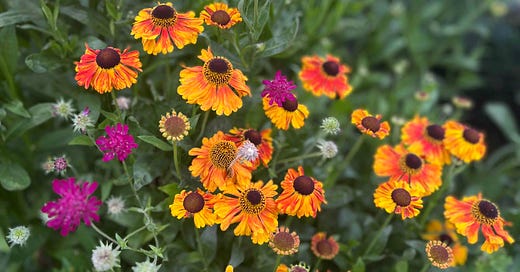



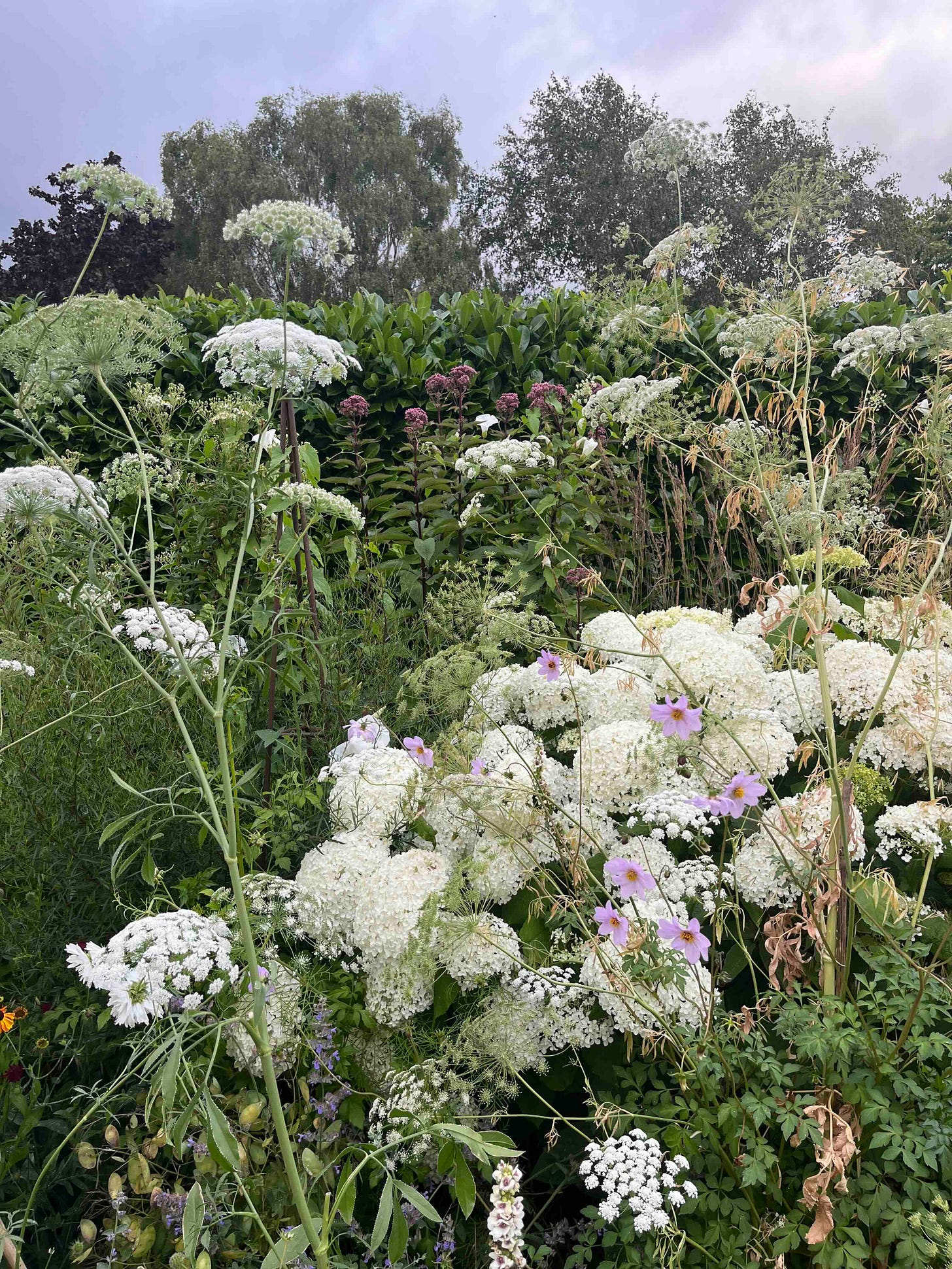
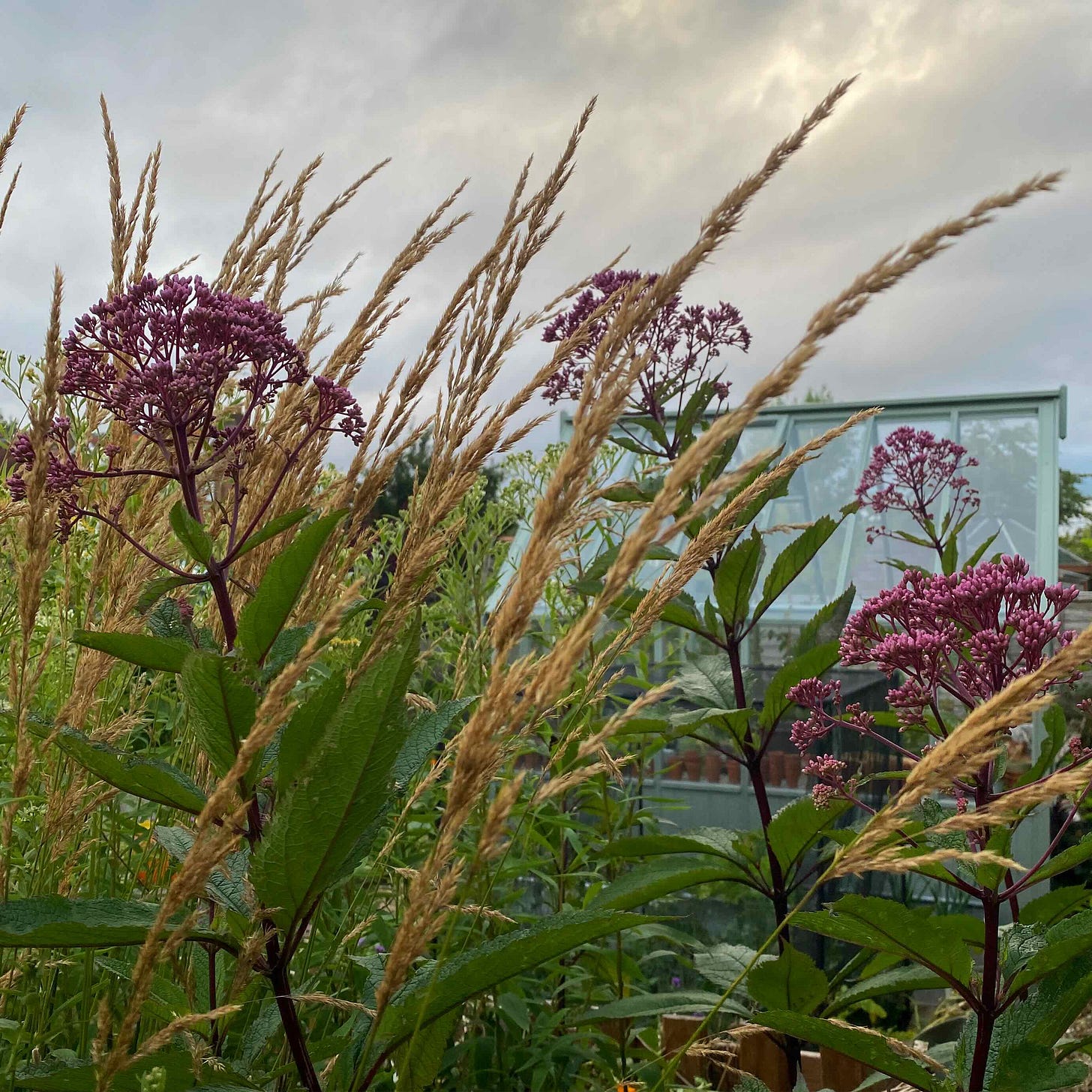
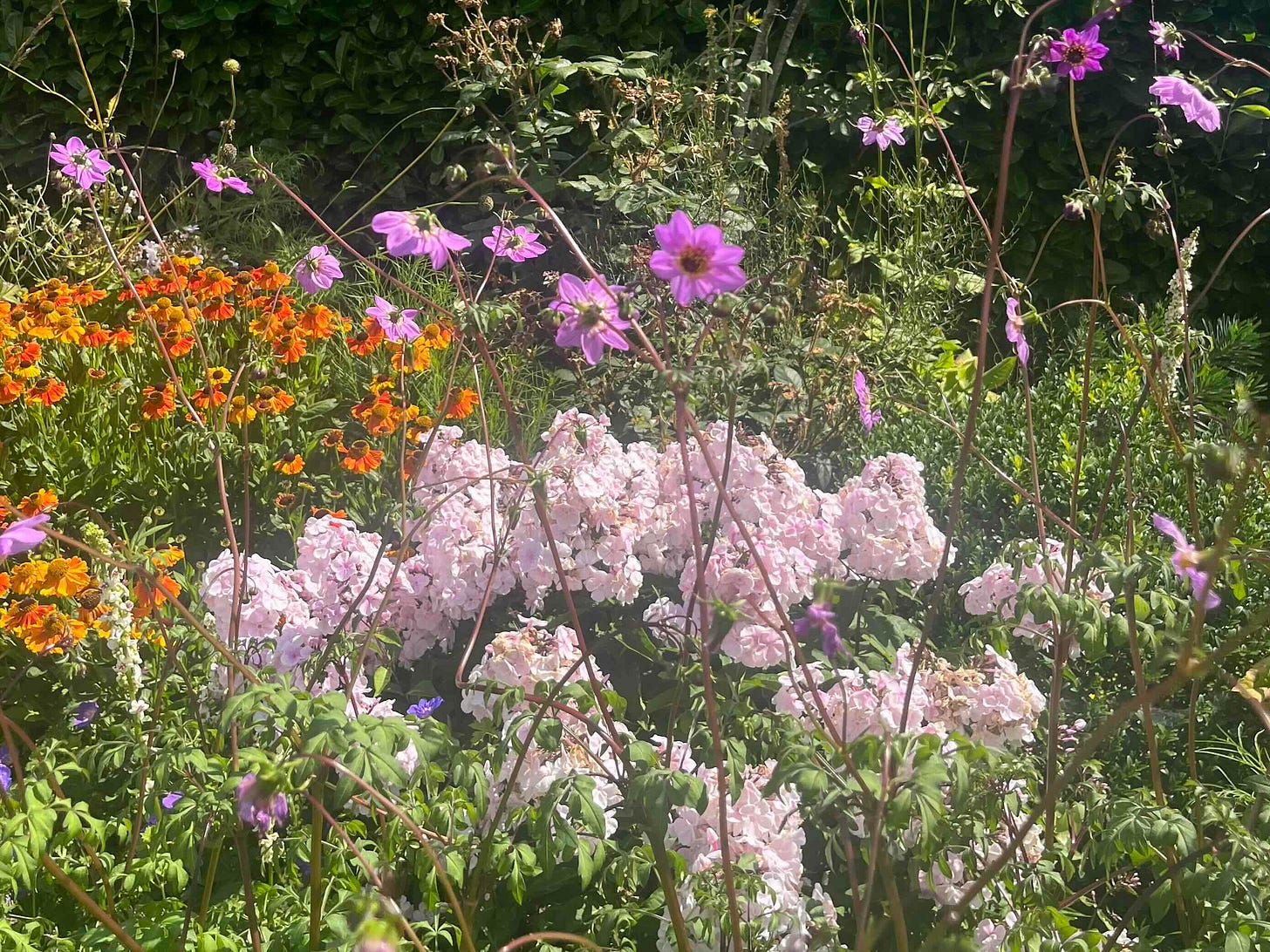

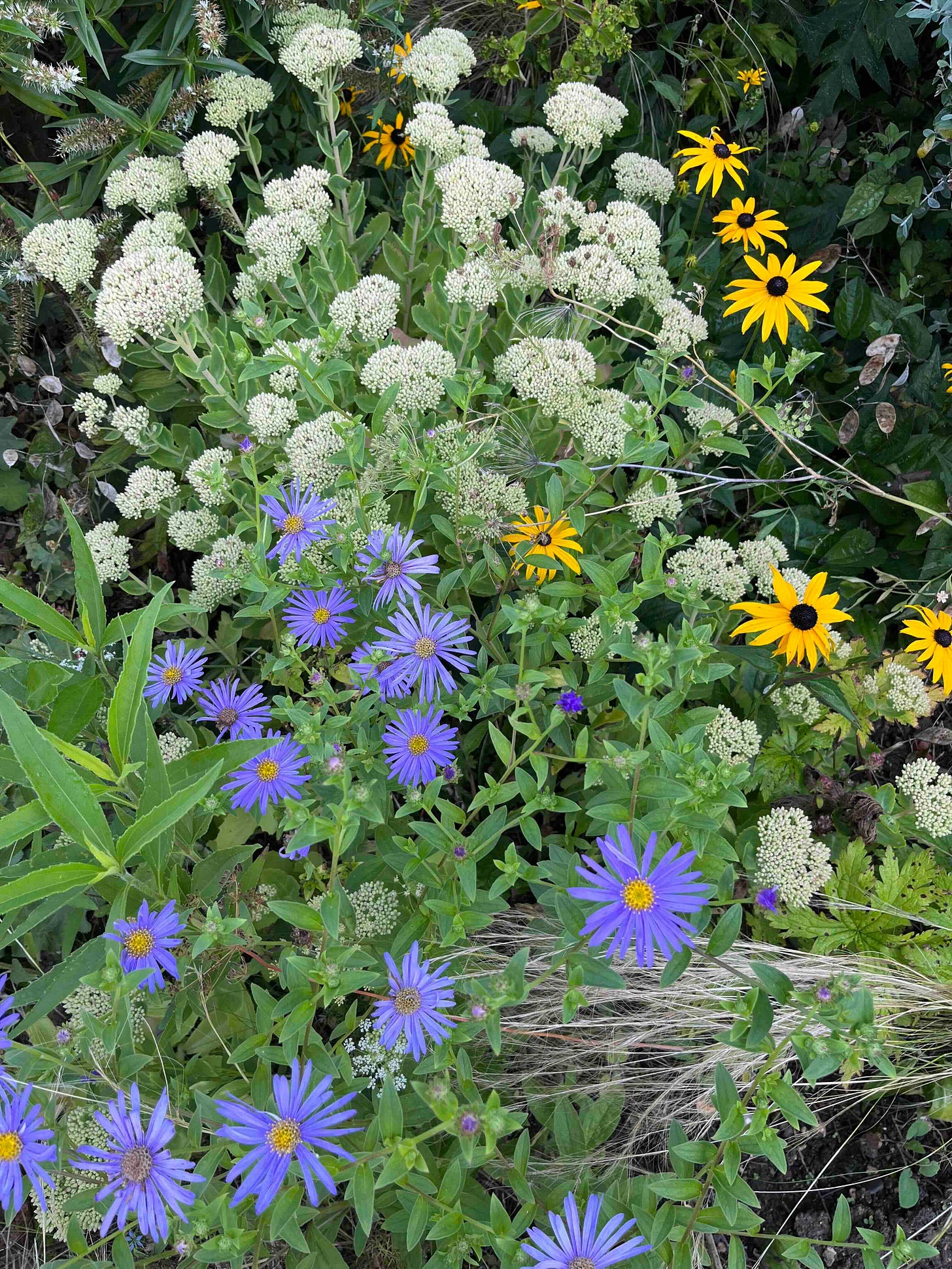
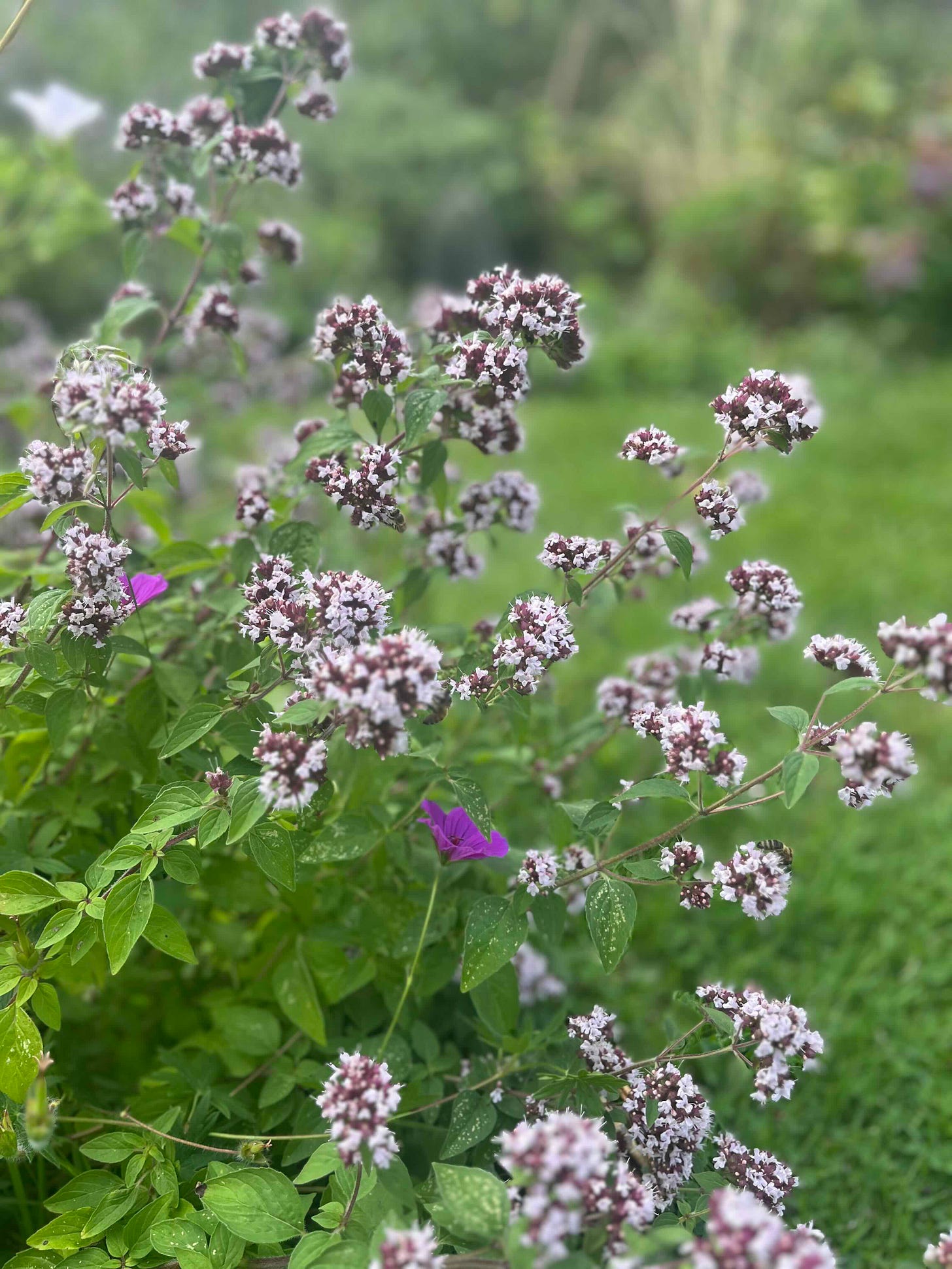
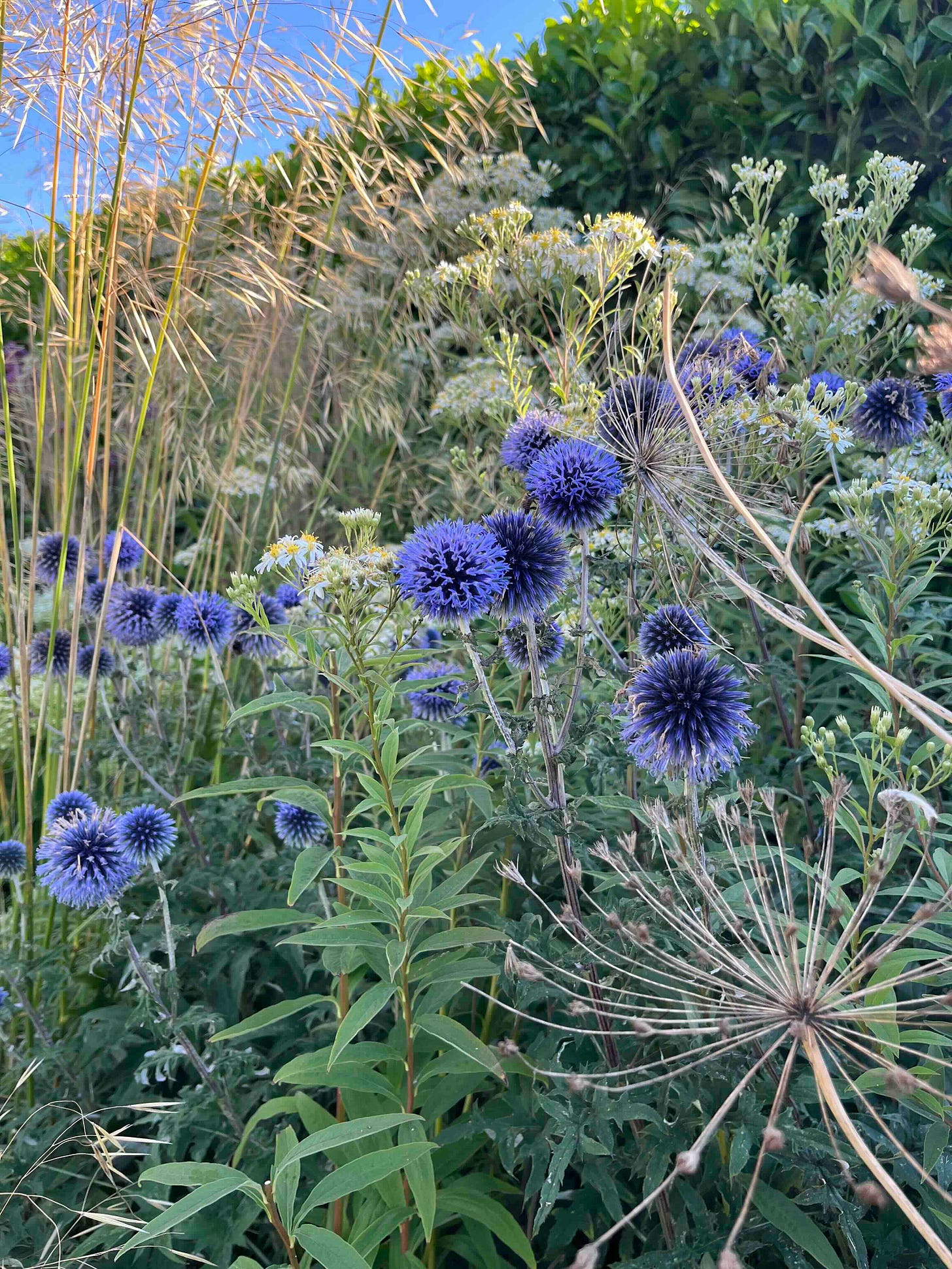
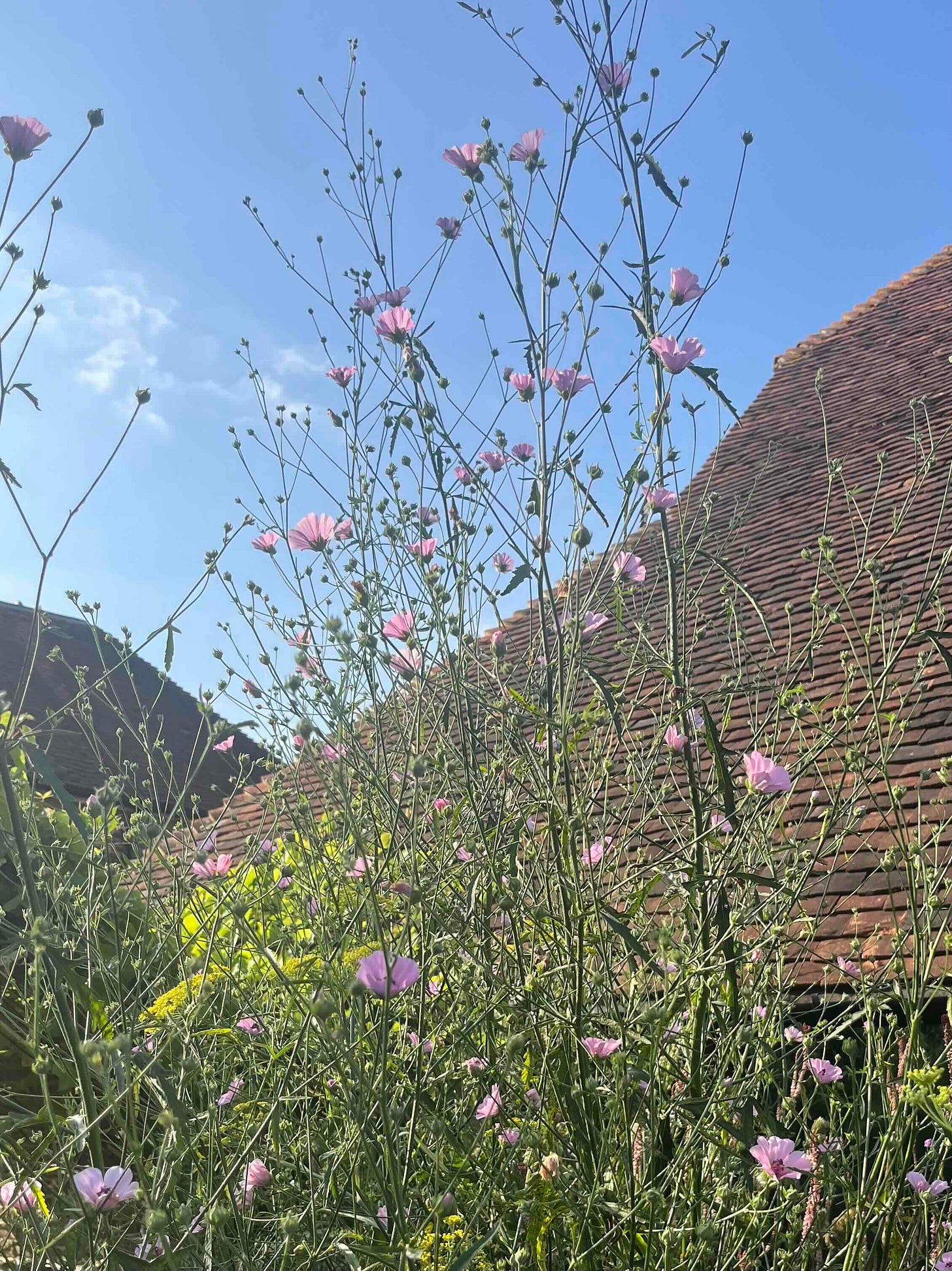
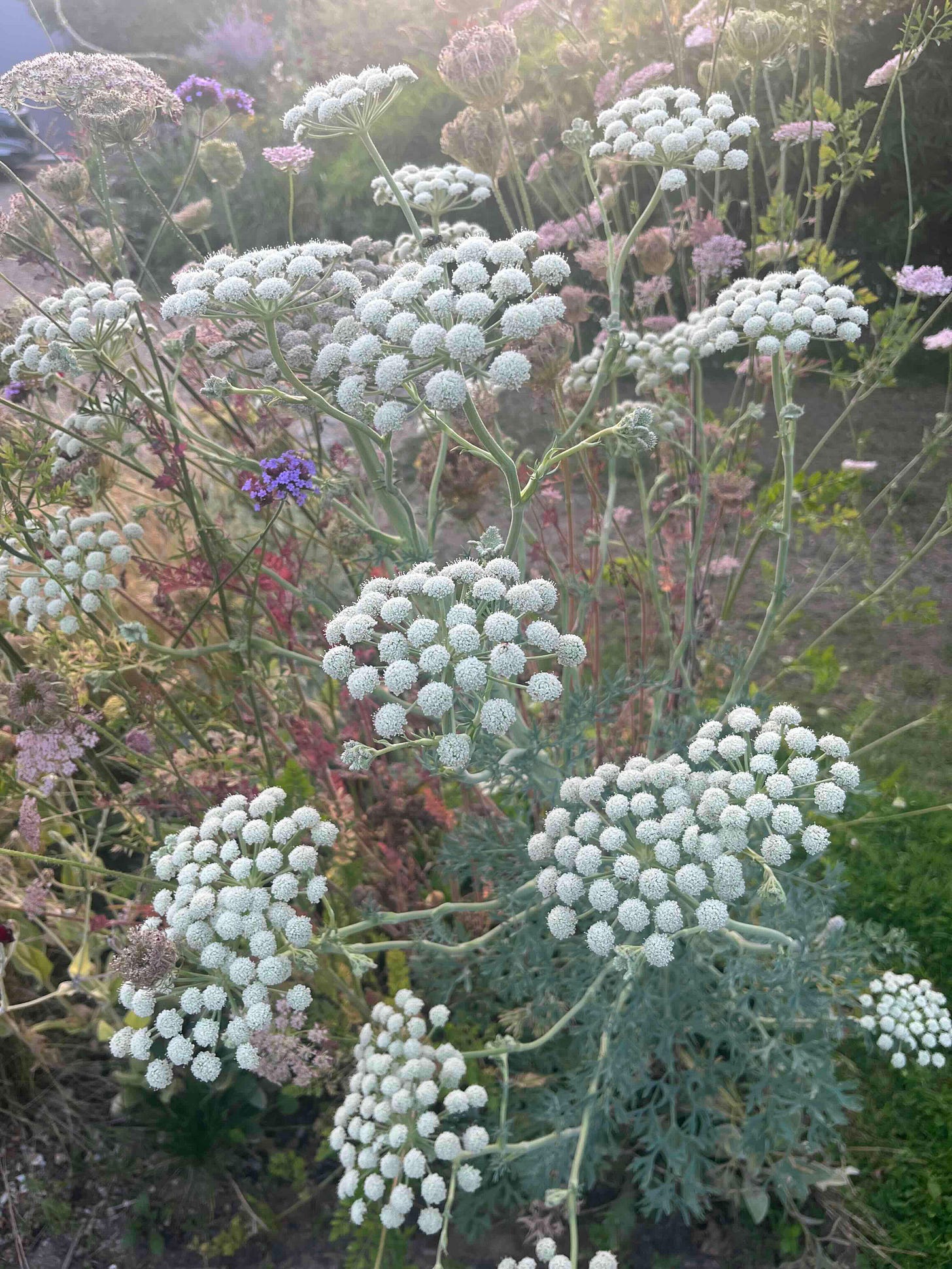

Really love that Althaea cannabina - thanks for the introduction 💜
What a gorgeous selection, Clare. I'm wondering next year whether to give the althaea the Chelsea Chop - do you ever you do that with althaea?